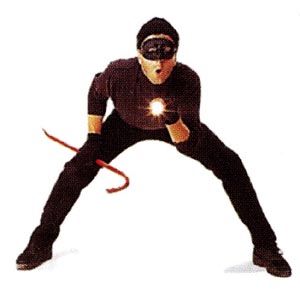
Basic home security consists of two things: keeping your home from looking like an easy target, and making a forced-entry troublesome for those trying to break in. Here are a few tips:
10 Common Home Security Mistakes
1. Unlocked windows and doors are the means of entrance in almost half of all burglaries. And most occur between 8 A.M. and 5 P.M. Lock up the house, even if you'll be out only a short period of time.
2. Weak strike plates allow your door to be opened with a few kicks. Install strike plates with screws long enough to penetrate into the wall framing.
3. Door chains can be yanked out with one good shove or kick.
4 Unchanged garage door openers allow crooks with a handful of common transmitters to click away until they find a garage door that responds.
5. Complete darkness is an invitation to break-ins. Install a motion-detector light.
6. Wimpy windows can often be jimmied open. Use sturdy locks.
7. Vulnerable sliding glass doors can be lifted out of their tracks. Use the precautions shown at right for making them more secure.
8. Hidden windows and doors are another invitation for crime. Keep bushes and trees trimmed back for increased safety.
9. Flimsy exterior doors are highly vulnerable. Replace hollow-core doors with those of steel, fiberglass or solid wood.
10. Burglar bait includes leaving empty boxes outside that advertise big purchases of computers, TVs and stereos. Ladders and other break-in tools left outside may also attract thieves.
Simple Security Measures
Some of the most effective security measures are free or inexpensive; they just take a little time. Here are a few small projects that offer big-time security:

Garage door openers. Randomly reset the tiny switches
in the transmitter, then set the switches on the receiver to match.
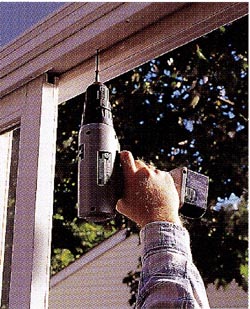
Top door track. Drive a couple of screws into the top track leaving
the heads protruding so the door can't be lifted and removed from the
outside.
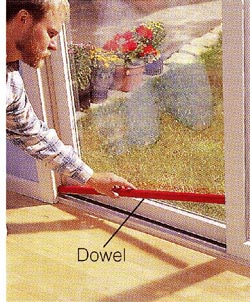
Bottom track. Supplement your existing lock by laying a cut-to-fit
dowel in the lower door track.
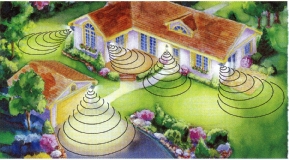
Motion Detectors
There's no need to arrive home in the dark or be kept in the dark about noises in the night. Outdoor lights that are activated by motion detectors can solve many safety and security problems. These electronic eyes can be adjusted to detect movement 70 ft. (20 m) or more away, in an area of up to 240 degrees. A timer can be set to determine how long the light stays on.
Installation can be as simple as shutting off power, removing the old fixture, then connecting the new wires and fixture. Follow the manufacturer's instructions and bear in mind:
• Heat from the bulb can confuse the detector; keep the bulb and detector as far apart as possible.
• Moisture can damage the detector and light sockets. Locate the fixture under an eave or buy one that has special bulb seals then angle the bulbs downward.
• Adjust the field of view angle to avoid nuisance trips from traffic, animals, wind-blown shrubs and other moving objects.
• Most fixtures allow you to double-flip the switch to keep the light on as long as you want, then double-flip again to return to motion-sensor mode.
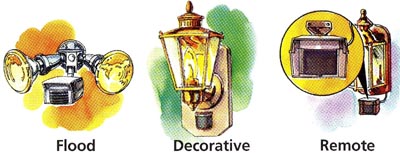
Related topics:
- Home Security Systems
- More Secure Windows
- Installing Deadbolts
- Door Reinforcement and Security